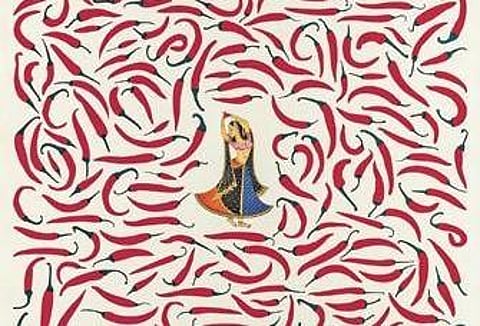

BENGALURU : Be it banana bread or dalgona coffee, food has come as a comfort to many in the Covid-19 pandemic. So, when it came to brainstorming over the focus of their latest exhibition, the team at Museum of Art & Photography (MAP) chose to look at history and art through the lens of food. Stories on a Banana Leaf, a digital project that was launched recently, combines sculptures, paintings, prints, textiles and photographs from MAP’s collection and brings them together with recipes from their team members.
“Food was central to what made us happy in these times - be it through sending food to colleagues as a sign of support or exchanging recipes. So, we dug into our collection and realised there are lots of works on food. We then combined those with recipes that people can easily try at home,” explains Arnika Ahldag, associate curator at MAP, who emphasises the collective effort of the team in bringing about this project. “There are many different ways to appreciate art and history, you could read or write about it. But what if we look at it through cooking?” she wonders.
After a month of work on this in June, Stories on a Banana Leaf went live in July, and will be available on MAP’s website for three months. Besides highlighting the museum’s presence in a South Indian city, the name of the exhibition also alludes to the bonding that happens over a meal, where nuggets of information about ingredients, personal stories, and more are exchanged.
“Food can bring people and memories together, both good and painful ones,” says Ahldag. The recipe she contributed illustrates this. Clubbed together with K G Subramanyan’s untitled oil on canvas painting, Ahldag’s Meen Moilee recipe has a short note by her that reads: “The dish is named after Molly, the lady who tempered down the spices of the otherwise really hot Kerala fish curry for the Britishers.” “There is heaviness in knowing that the dish was made easier so that a white person could have it too,” she points out.
Similar observations, notes, and recipes came from across the various departments at MAP. Take, for instance, an advertisement for Cadbury chocolates with a recipe for a microwave choco lava mug cake; a coconut grater and vegetable cutter with a cucumber and coconut salad; and so on. Tanushree Kulkarni, a development officer, recommends a red wine-poached pear based on an ancient painting.
“The exhibition doesn’t just show the confluence of different cultures but also the anthropological and linguistic implications. The regional word for jackfruit - kathal - comes from the central Indian ethnic group of Mundas. It’s important for us to understand the word that we use so commonly today is borrowed, because the languages of the Mundas are now endangered,” she explains.
Shubhasree Purkayastha’s recipe - Kathal Bij-er Chop - adds more food for thought. “This recipe is common in many Bengali households, where the fruit is adored so much, that even its seeds are not wasted. That was also the point of this exhibition - to bring in stories and connections that cultures from across the country have with food,” she says. The exhibition can be viewed on MAP’s website.